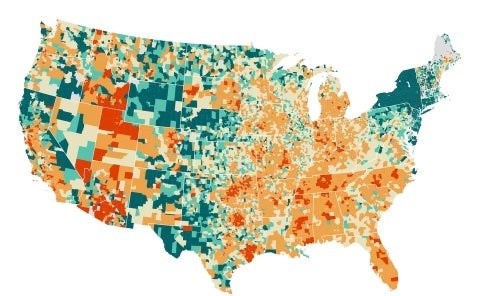Written by Adam Savageau
According to the National Bureau of Economic Research, each dollar spent towards schooling in a neighborhood results in a $20 appreciation in homes (Gorman). Not only do good schools add tremendous value to the surrounding housing, but higher home prices feed back into schools. NBER also notes that, as housing prices rise, property taxes and public school expenditures also increase in the following year (Foy). Housing and education are inextricably linked, creating a feedback loop that drives districts toward inequality. This article will break down the mechanics of the relationship from both the housing and education perspectives.
First, home prices are a core factor of quality education. In the United States, public schools are funded by all levels of government, with local and state comprising 92% of the funding (Allegretto). In more affluent neighborhoods, however, local funding supplies a much larger portion since property taxes are directly associated with school expenditures. In other words, local taxes make the difference between mediocre and excellent public schools. In addition to taxes, affluent neighborhoods have more educated residents, leading to a heightened emphasis on schooling at home, and a higher propensity to volunteer time and money towards school improvement (McKenna). Lastly, high home prices lead to higher rent and taxes which drives out low-income families. Low-income families need more resources to help their children in school, so their relocation leads to less diverse, yet “higher-quality” schools.
Since home prices have been linked to educational quality, we can extend economic principles to explain changes on both ends. This means determinants of housing supply and demand must also affect educational quality. A topical example of supply-side inputs is lumber prices, which are a major driver of prices for new home construction. In August 2022, the Biden administration cut lumber tariffs on Canada by over 50%, greatly lowering the cost of importing foreign lumber (Watson). Since Canada supplies 80% of the lumber in the US market, market prices dropped over 60%, and home construction has been made significantly more affordable (Trading Economics). Cheaper inputs to housing construction will increase general supply and drive down home prices. This chain of effects including tariffs, lumber prices, and housing prices has a negative impact on education quality, ultimately lowering the surrounding housing prices.
Looking at the demand side, we can also conclude effects on school quality are based on the demand for local housing. Recently, the Federal Reserve increased the federal funds rate by 0.5% and announced a long-term target rate of 5.1% (Federal Reserve Board). Since most housing is purchased through mortgages that are linked closely to the federal funds rate, demand for houses fell and market prices plummeted. Homeowners saw property values decline, and nearby schools will draw significantly less funding in the coming tax cycle (Ostrowski). Overall, macroeconomic factors such as commodity prices and interest rates can be tied to funding for public schools, and it will be interesting to see how policy in the next few years impacts the quality of education.
Conversely, we can look at education quality being a driver of home prices. This is a more intuitive approach, as most families that move homes pay close attention to the surrounding schools. Younger parents often relocate with the intent of sending their children to better schools, and they will pay a premium in housing to provide such an opportunity. Due to this heightened demand, districts with reputations for having high-quality schools will simply cost more to live in. Good schools provide children with better opportunities after high school, and they offer more enrichment activities that leave parents with free time. Even for families without children, quality schools lower neighborhood crime by both teenagers and adults (Rivkin). Quality schools are clearly a massive driver of demand for all homebuyers.
Using the logic above, we can again employ economic principles to derive relationships between supply and demand for education and local home prices. Further, the quality of schools is often driven by the quality of teachers, so the behavior of teachers can therefore have implications for surrounding home prices. For example, certain states have active unions that demand higher wages and attract better teachers to schools (Ehrenberg). When unions draw better teachers to a district, educational quality improves, and homebuyers flock (Zhu). Similarly, demand for education can swing home prices as well. When the disposable income of residents increases, parents are more likely to volunteer time and donate money into improving the school in their district (Chevalier). This will draw in more demand for homes in the neighborhood and further appreciate the market. It is easy to see how “each dollar spent towards schooling” could cause a “$20 appreciation in homes” (Gorman).
This effect is not only dramatic, but it moves extremely fast. In 1999, Florida established a ranking system for schools, making the differences in quality very transparent. Professor David Figilo of Northwestern University noted that “An A-rated school in Gainesville added about $10,000 to the value of a home there versus a B school” (Chen). This change was measured over the course of months. Overall, shifters in the supply and demand of education have a strong and immediate influence over housing prices.
Now that the economics between housing prices and schooling quality has been examined, we can look at the relationship holistically. The relationship between housing prices and schooling quality is a positive feedback loop, where an upward trend exists in either both or neither of the variables. Unfortunately, this leads to vast inequality between different schools and families, as the boundary lines of a district separate the good schools from the bad. Since the relationship is cyclical and difficult to break, it becomes difficult for both good districts to fail and poor districts to catch up. Conscious of this, we must explore policy that makes education funding more inclusive so the path toward schooling improvement is more accessible for all.
Works Cited
*Ehrenberg, Ryan G. “Chapter 22 Public-Sector Labor Markets.” Handbook of Labor Economics, Elsevier, 6 Apr. 2005, https://www.sciencedirect.com/science/article/pii/S1573446386020126.
Allegretto, Report • By Sylvia. “Public Education Funding in the U.S. Needs an Overhaul: How a Larger Federal Role Would Boost Equity and Shield Children from Disinvestment during Downturnsjul.” Economic Policy Institute, EPI, 12 July 2022, https://www.epi.org/publication/public-education-funding-in-the-us-needs-an-overhaul/.
Chen, Grace. “What Is the Connection between Home Values and School Performance?” Public School Review, Public School Review, 26 Apr. 2021, https://www.publicschoolreview.com/blog/what-is-the-connection-between-home-values-and-school-performance.
Chevalier, Arnaud, et al. “The Impact of Parental Income and Education on the Schooling of Their Children – IZA Journal of Labor Economics.” SpringerOpen, Springer Berlin Heidelberg, 9 Dec. 2013, https://izajole.springeropen.com/articles/10.1186/2193-8997-2-8.
Foy, Morgan. “Booming Home Prices Spur Spending on Public Education.” NBER, National Bureau of Economic Research, Feb. 2018, https://www.nber.org/digest/feb18/booming-home-prices-spur-spending-public-education.
Gordon, Linda. “School Spending Raises Property Values.” NBER, Jan. 2003, https://www.nber.org/digest/jan03/school-spending-raises-property-values.
“Implementation Note Issued December 14, 2022.” Board of Governors of the Federal Reserve System, 2022, https://www.federalreserve.gov/newsevents/pressreleases/monetary20221214a1.htm.
Koster, Amanda. “Finding a Home in a Good School District.” The Wall Street Journal, Dow Jones & Company, 25 June 2010, http://online.wsj.com/article/SB10001424052748704009804575308951902854896.html.
“Lumber2023 Data – 1978-2022 Historical – 2024 Forecast – Price – Quote – chart2.” Lumber – 2023 Data – 1978-2022 Historical – 2024 Forecast – Price – Quote – Chart, 2023, https://tradingeconomics.com/commodity/lumber.
McKenna, Laura. “How Rich Parents Can Exacerbate School Inequality.” The Atlantic, Atlantic Media Company, 28 Jan. 2016, https://www.theatlantic.com/education/archive/2016/01/rich-parents-school-inequality/431640/.
Ostrowski, Jeff. “What the Fed’s First Rate Hike of 2023 Means for Housing.” Bankrate, 1 Feb. 2023, https://www.bankrate.com/real-estate/how-fed-rate-hike-affects-housing/.
Riven, Daniel. “Public School Investment Reduces Adult Crime, Study Shows.” The University Record, 2022, https://record.umich.edu/articles/public-school-investment-reduces-adult-crime-study-shows/.
Watson, Felicia. “Canadian Lumber Tariffs Cut by More than Half.” NAHB, 2022, https://www.nahb.org/blog/2022/08/lumber-tariff. Zhu, Simon. “The Effect of Teachers’ Unions on Educational outcomes1.” The Effect of Teachers’ Unions on Educational Outcomes, Berkeley, 10 May 2019, https://www.econ.berkeley.edu/sites/default/files/Zhu_Simon_Teachers%20Unions.pdf.


